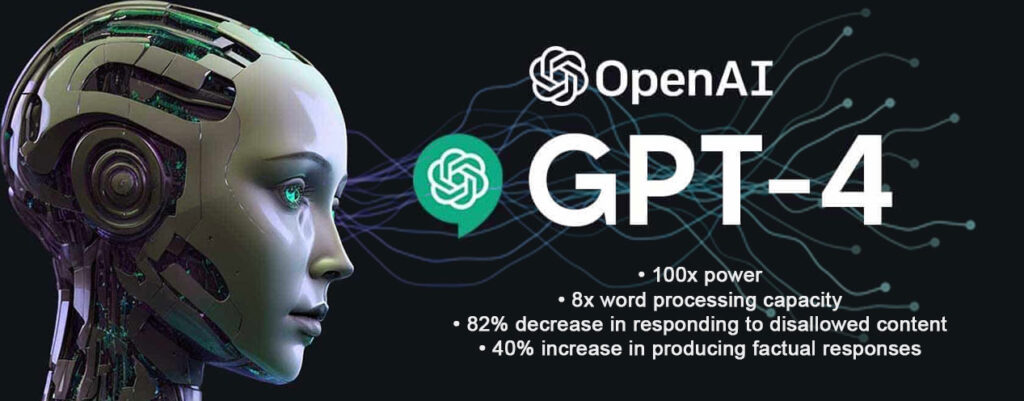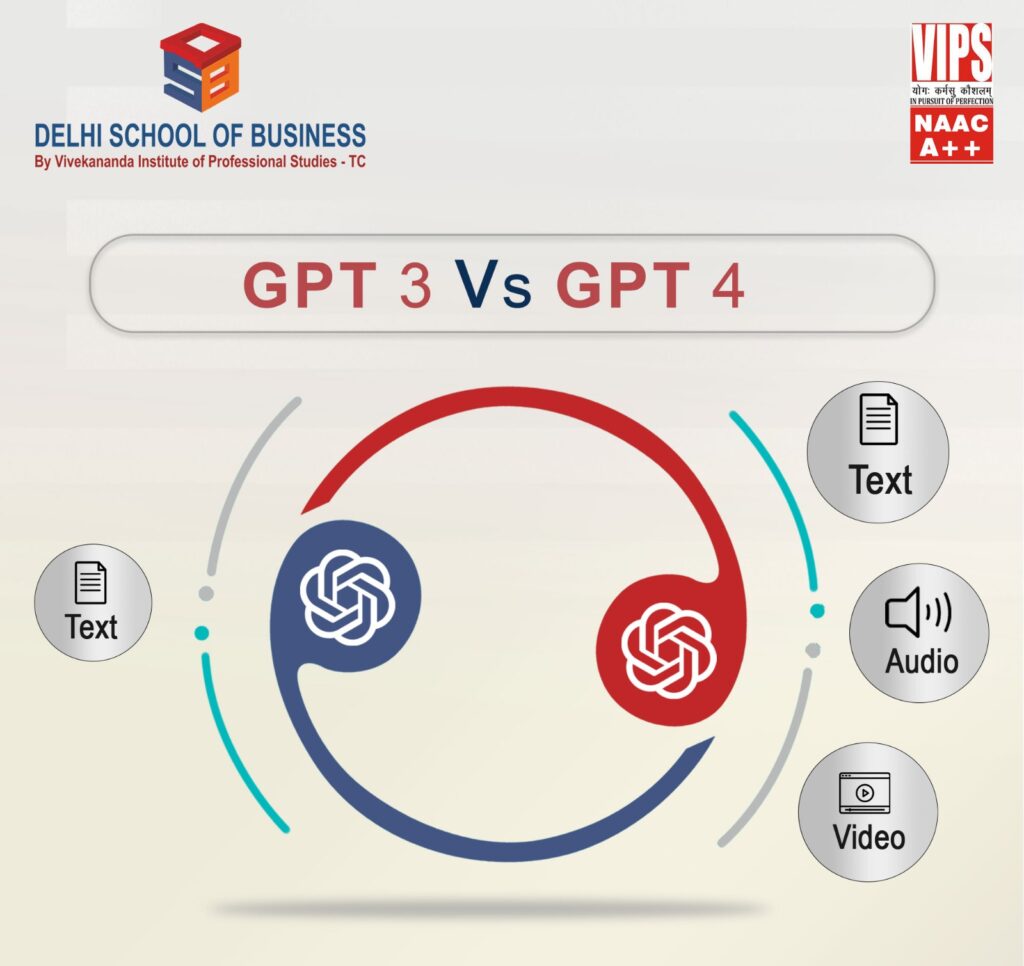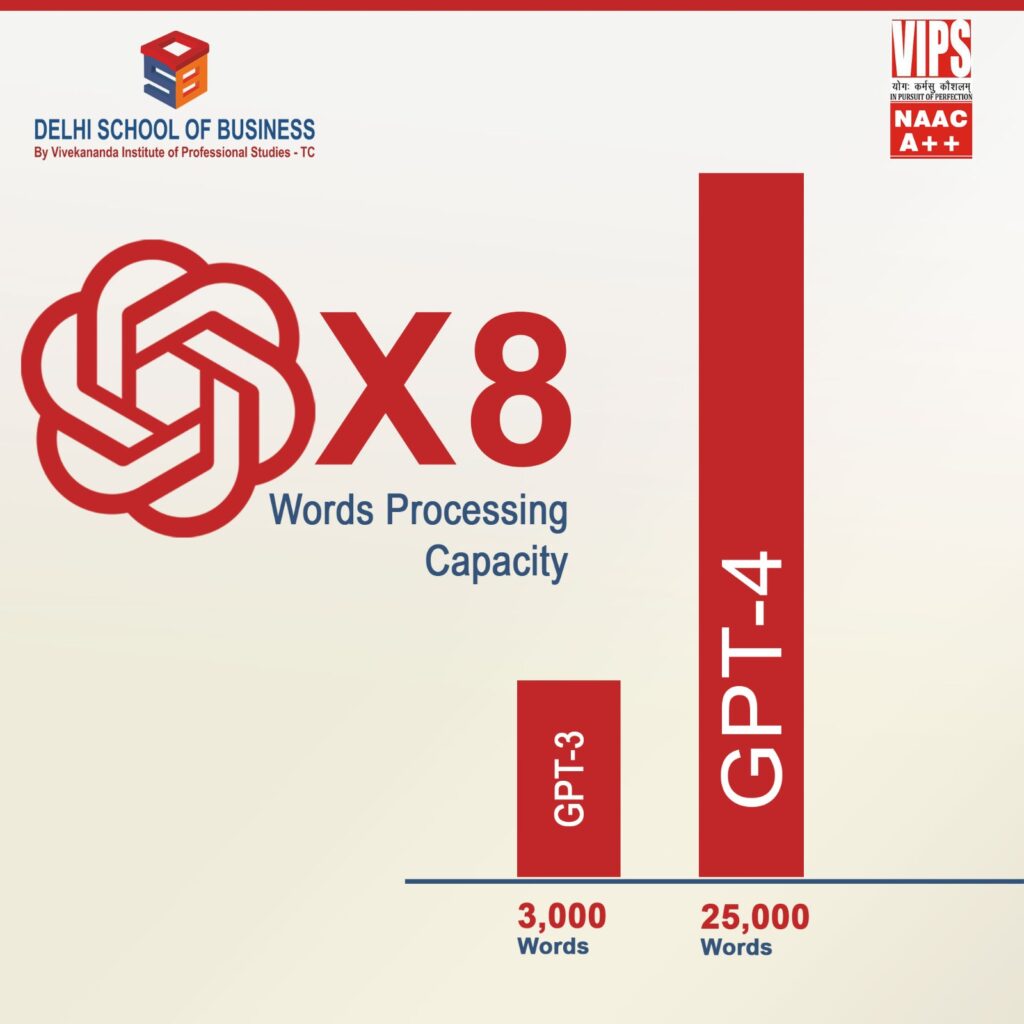The Evolution Of AI: GPT-3 Vs GPT-4

The world of AI has been revolutionized by OpenAI’s GPT series. ChatGPT is working on Generative Pre-trained Transformers (GPT) to converse with users and provide insightful content.
The first GPT launched by OpenAI in 2018 used 117 million parameters. Whereas GPT-2, a predecessor to GPT-3, displayed impressive language generation capabilities with 1.5 billion parameters.
However, GPT-3 took a quantum leap forward, possessing 175 billion parameters, 116 times more than GPT-2 and offering unprecedented performance in various tasks like translation, summarization, and question-answering. GPT-3.5 followed further refining the model’s abilities and broadening its use cases by increasing the maximum request value of 2,049 tokens to 4,096 tokens.
The revolutionary GPT-4, launched on March 14, 2023, dwarfs GPT-3.5 in terms of power, parameters, and potential applications with its model size being increased by 100x. Its advanced architecture allows for even more sophisticated and human-like interactions, making it highly sought-after in industries such as customer support, content creation, and programming.
ChatGPT 4 is multimodal and can comprehend images, unlike Chat GPT-3, which is limited to text inputs and responses. Although image recognition is still in its early stages, it can help visually impaired individuals identify objects or read food packaging labels.
It can process up to 25,000 words at once, eight times more than ChatGPT 3 which was just 3,000 words at once, making it more efficient for larger documents and multilingual tasks.
It is also safer to use, with an 82% decrease in responding to disallowed content and a 40% increase in producing factual responses.
The future of AI is truly exciting. With GPT-4’s groundbreaking capabilities, we can anticipate AI systems that deeply understand and generate human-like content, enhancing our productivity and augmenting our lives in ways we have yet to imagine.
Jobs that involve repetitive tasks or data analysis, such as administrative work, data entry, and even some aspects of programming, are at risk of being automated. Still, AI will not replace current world jobs, but people using AI definitely will.
The rapid development of AI is evident in the transition from ChatGPT, launched on November 30, 2022, based on GPT-3, to the introduction of GPT-4 in less than six months. As we gaze at GPT-4’s capabilities, AI continues to push the boundaries of AI technology, and we eagerly await the arrival of GPT-5 and beyond.
20 Jobs and Human Traits that GPT-4 can potentially replace are:
Job
Human Trait Replaced
Job
Human Trait Replaced
|
| ||
Data Entry Clerk | Speed and Accuracy | Translator | Language Proficiency |
Customer Service Representative | Communication and Empathy | Copywriter | Creativity and Writing |
Proofreader | Attention to Detail | Market Research Analyst | Analytical Skills |
Paralegal | Research and Organization | Social Media Manager | Content Creation and Curation |
Bookkeeper | Mathematical Skills | Appointment Scheduler | Time Management |
Telemarketer | Persuasion and Communication | Virtual Assistant | Multitasking and Organization |
Transcriptionist | Listening and Typing Skills | News Reporter | Fact-checking and writing |
Travel Agent | Planning and Coordination | Tutor | Knowledge and Teaching |
Technical Support Analyst | Troubleshooting and Problem-solving | Email Marketer | Writing and Targeting |
Content Moderator | Critical Thinking and Judgment | Recruiter | Interviewing and Assessment |



